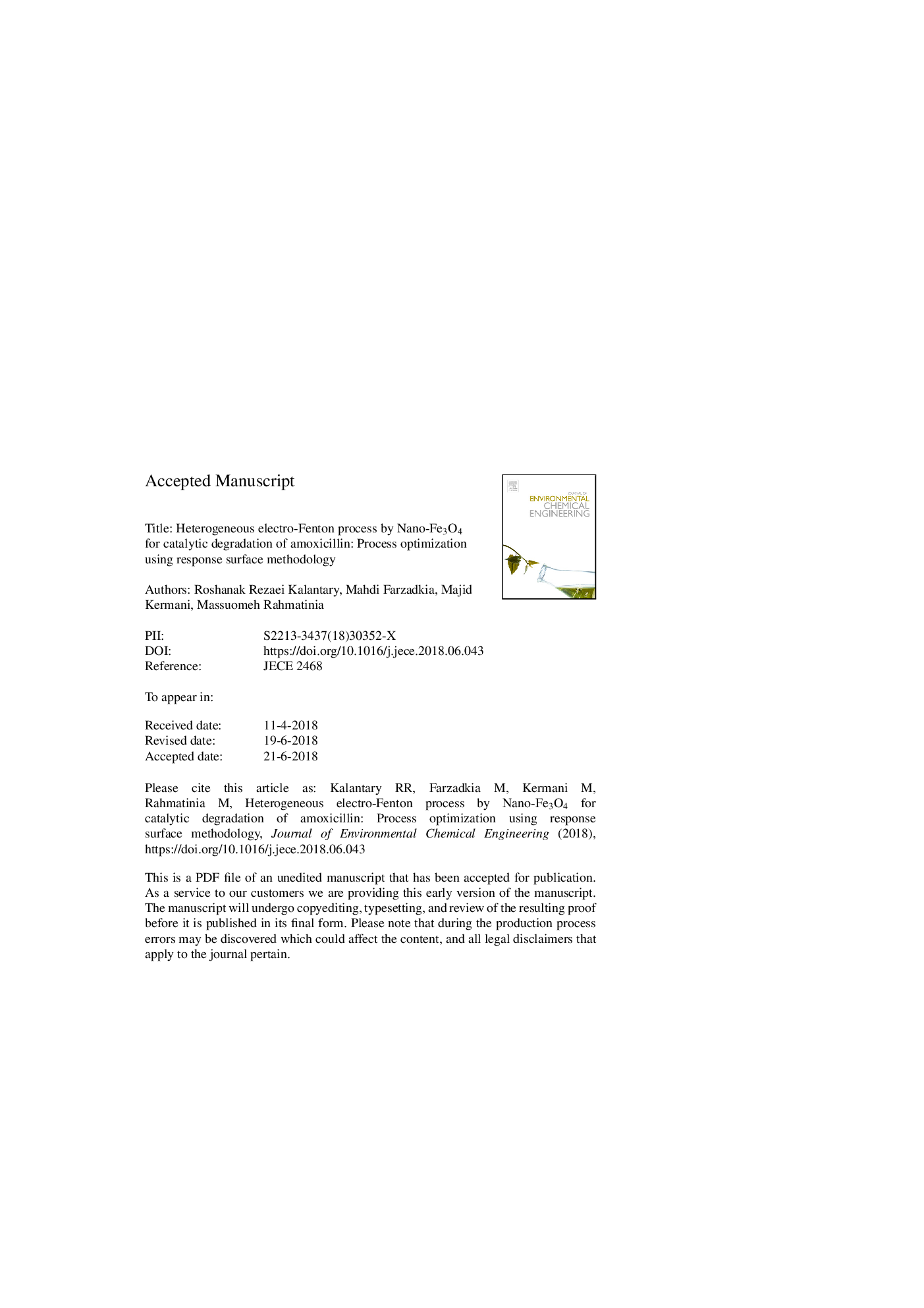| Article ID | Journal | Published Year | Pages | File Type |
|---|---|---|---|---|
| 6663916 | Journal of Environmental Chemical Engineering | 2018 | 27 Pages |
Abstract
The process of amoxicillin (AMX) degradation was investigated by heterogeneous electro-Fenton without external aeration. Graphite felt was modified by means of carbon black and polytetrafluoroethylene (PTFE) to increase the production of hydrogen peroxide and nano- Fe3O4 was also synthesized by chemical co-precipitation method. After optimization of pH and time variables, Box-Behnken design was applied for analyzing and optimization of the experimental factors such as applied current, amoxicillin concentrations, catalyst load and the distance between electrodes. The characteristics of nano-particles with cubic spherical structure and an average diameter of about 20-30â¯nm were determined via XRD and FESEM techniques. Modification of cathode led to increasing yield of H2O2 by around 5.2 times. Analysis of variance (ANOVA) revealed that the quadratic model was adequately fitted to the experimental data with R2 (0.9884) and adj-R2 (0.9769). Under optimum conditions, the maximum removal efficiency was obtained to be 98.2%. Furthermore, the reusability test of nano-Fe3O4 after several cycles confirmed the high catalytic activities of adsorbent. The findings of present study revealed that heterogeneous electro-Fenton process without external aeration was a proper method for degradation of AMX from aqueous solutions.
Related Topics
Physical Sciences and Engineering
Chemical Engineering
Chemical Engineering (General)
Authors
Roshanak Rezaei Kalantary, Mahdi Farzadkia, Majid Kermani, Massuomeh Rahmatinia,
